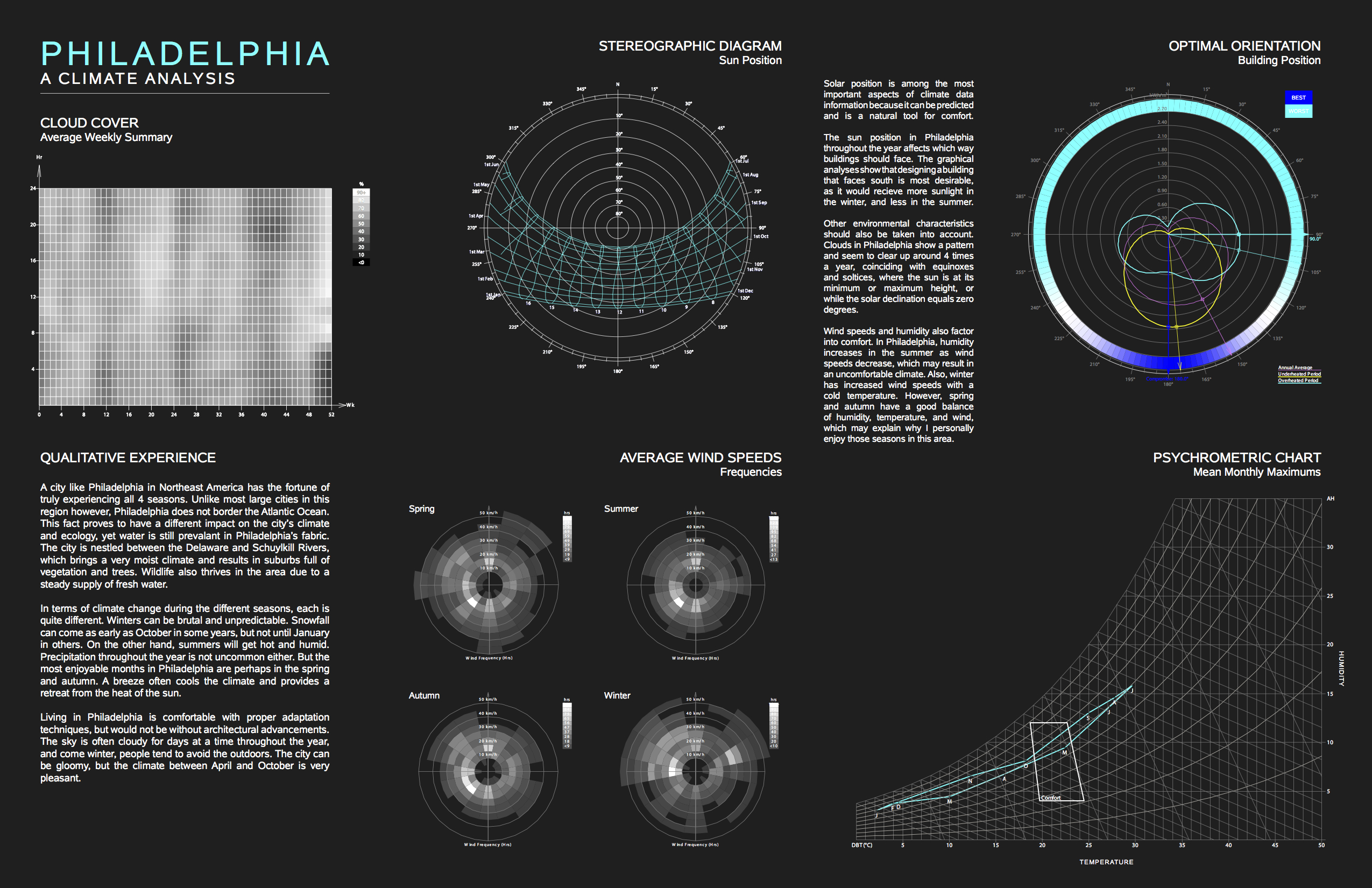CLIMATE ANALYSIS OF PHILADELPHIA
A city like Philadelphia in Northeast America has the fortune of truly experiencing all 4 seasons. Unlike most large cities in this region however, Philadelphia does not border the Atlantic Ocean. This fact proves to have a different impact on the city’s climate and ecology, yet water is still prevalant in Philadelphia’s fabric. The city is nestled between the Delaware and Schuylkill Rivers, which brings a very moist climate and results in suburbs full of vegetation and trees. Wildlife also thrives in the area due to a steady supply of fresh water.
In terms of climate change during the different seasons, each is quite different. Winters can be brutal and unpredictable. Snowfall can come as early as October in some years, but not until January in others. On the other hand, summers will get hot and humid. Precipitation throughout the year is not uncommon either. But the most enjoyable months in Philadelphia are perhaps in the spring and autumn. A breeze often cools the climate and provides a retreat from the heat of the sun.
Living in Philadelphia is comfortable with proper adaptation techniques, but would not be without architectural advancements. The sky is often cloudy for days at a time throughout the year, and come winter, people tend to avoid the outdoors. The city can be gloomy, but the climate between April and October is very pleasant.
Solar position is among the most important aspects of climate data information because it can be predicted and is a natural tool for comfort.
The sun position in Philadelphia
throughout the year affects which way
buildings should face. The graphical 300° analyses show that designing a building
that faces south is most desirable,
as it would recieve more sunlight in 285°
the winter, and less in the summer.
Other environmental characteristics
should also be taken into account.
Clouds in Philadelphia show a pattern
and seem to clear up around 4 times
a year, coinciding with equinoxes
and soltices, where the sun is at its
minimum or maximum height, or
while the solar declination equals zero
degrees. 240°
Wind speeds and humidity also factor into comfort. In Philadelphia, humidity increases in the summer as wind speeds decrease, which may result in an uncomfortable climate. Also, winter has increased wind speeds with a cold temperature. However, spring and autumn have a good balance of humidity, temperature, and wind, which may explain why I personally enjoy those seasons in this area.

